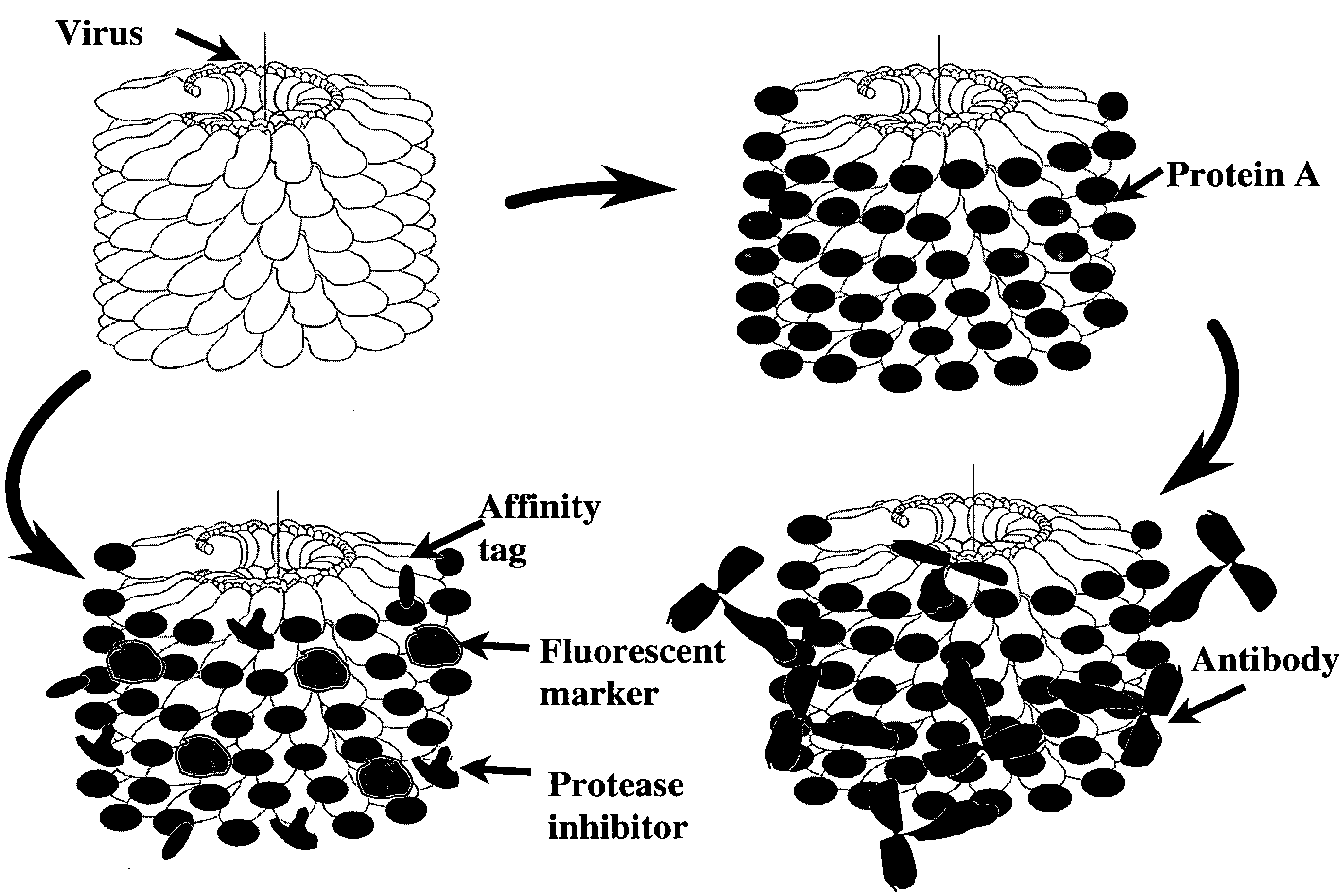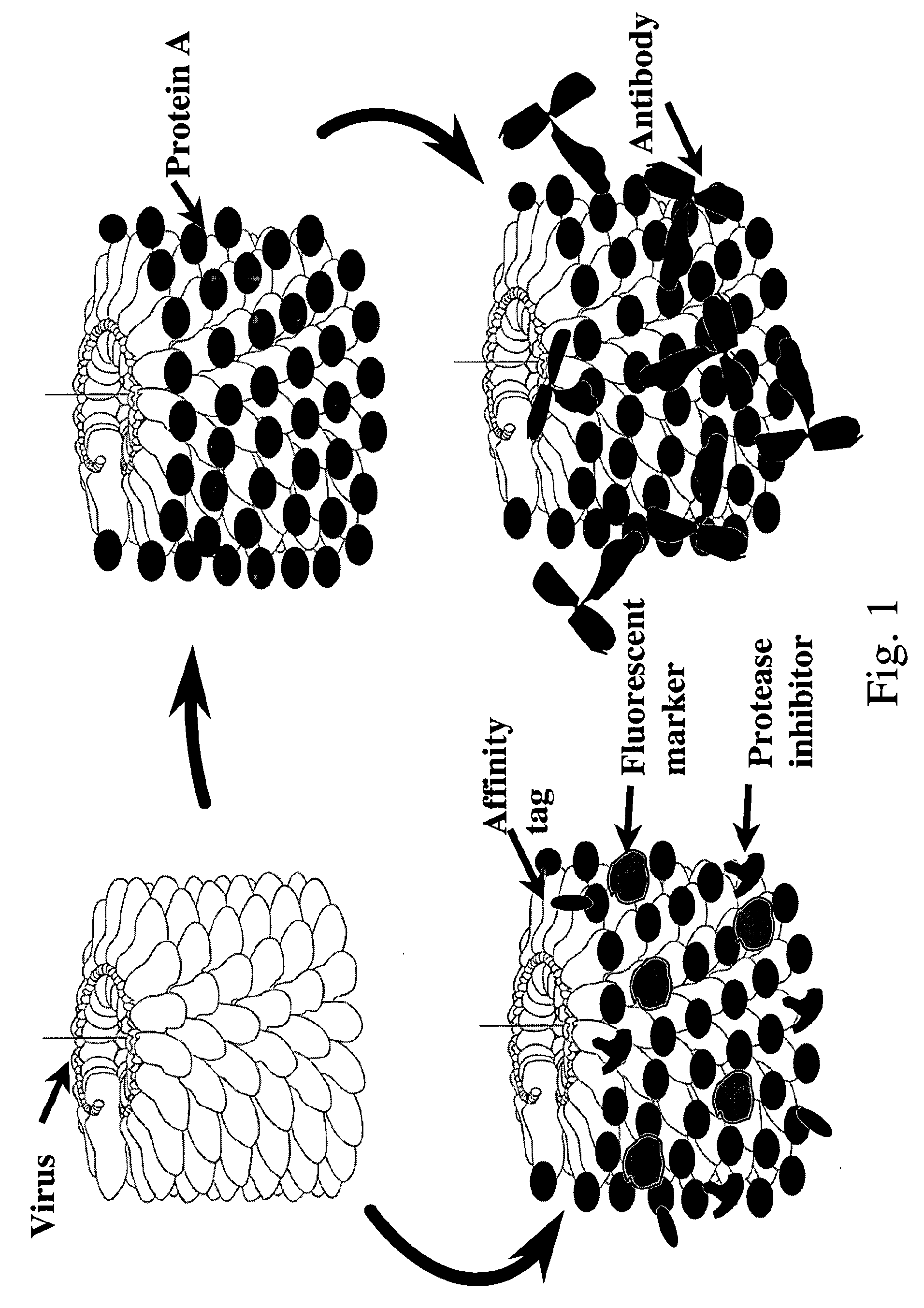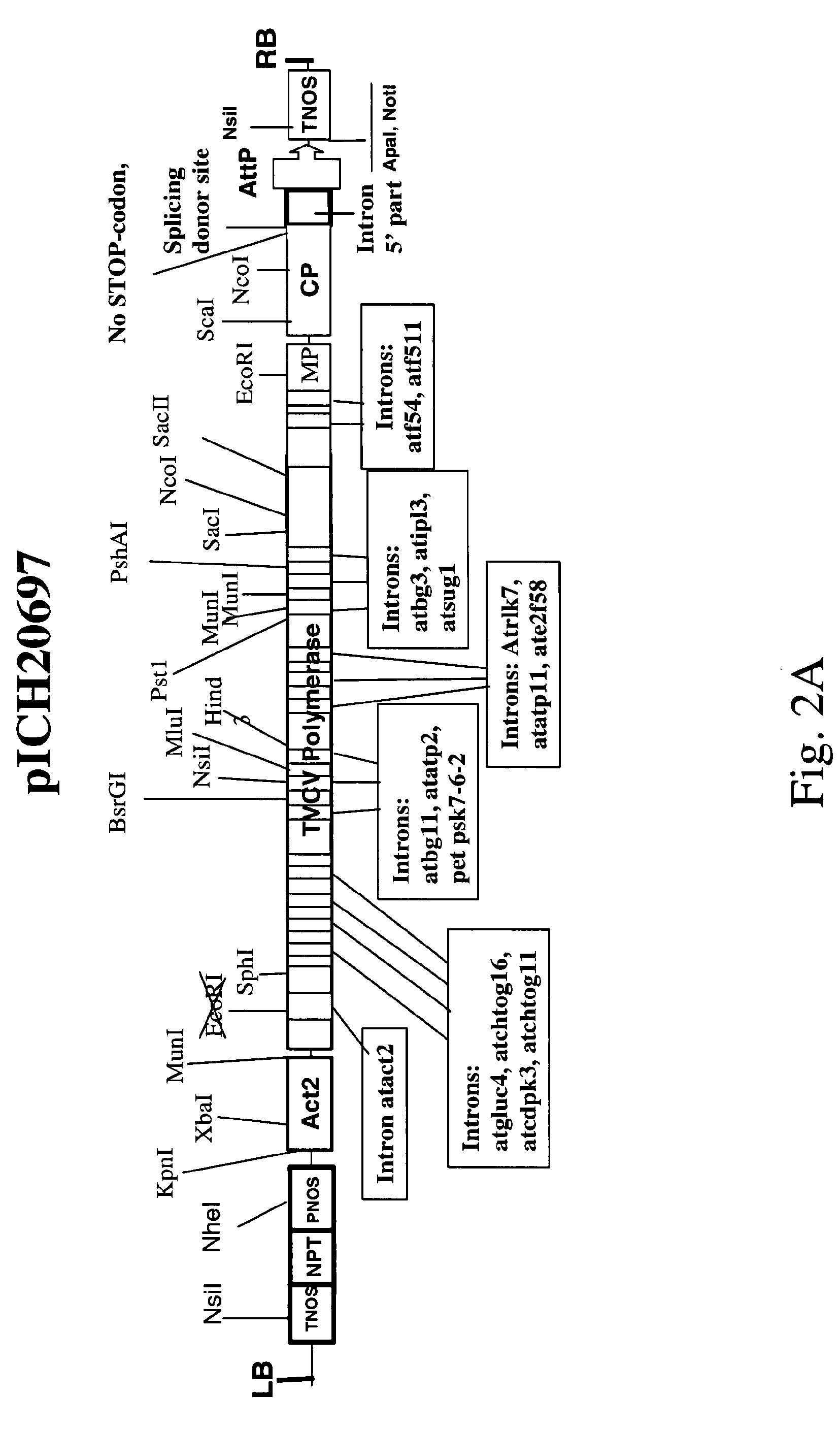Plant viral particles comprising a plurality of fusion proteins consisting of a plant viral coat protein, a peptide linker and a recombinant protein and use of such plant viral particles for protein purification
- Summary
- Abstract
- Description
- Claims
- Application Information
AI Technical Summary
Benefits of technology
Problems solved by technology
Method used
Image
Examples
example 1
Construction of TVCV- and PVX-Based Provectors for Expression of CP-Fusion Proteins
[0144]The vectors used in the following examples are generally described in two recent publications (Marillonnet et al., 2004, Proc Natl Acad Sci USA, 101:6852-6857; Marillonnet et al., 2005, Nat. Biotechnol., 23:718-723). The cDNA for Potato Virus X (PVX) was generated from PVX isolate PV-0014 received from DSMZ collection (http: / / www.dsmz.de) by RT-PCR and used for creating PVX provectors. The descriptions of PVX-based expression system are provided in numerous publications (Chapman, Kavanagh & Baulcombe, 1992, Plant J., 2:549-557; Baulcombe, Chapman & Santa Cruz, 1995, Plant J., 7:1045-1053; Angell & Baulcombe, 1997, EMBO J., 16:3675-3684).
a) The 5′-Provectors of Tobamovirus TVCV (Turnip Vein Clearing Virus)
[0145]The 3′-part of the TVCV Coat protein was amplified by PCR using primers cptv1 and cpfus4 or cpfus5 thus introducing a (GGGGS)3-linker or a (EAAAK)3-linker to the C-terminus of CP. The PCR ...
example 2
Expression of CP-Fusion Proteins in Plants
Agroinfiltration
[0152]All constructs were electroporated into Agrobacterium tumefaciens GV3101. Agroinfiltrations of N. benthamiana plants were done essentially as described in Marillonnet et al., 2004, Proc Natl Acad Sci USA, 101:6852-6857. Three agrobacterial strains containing 5′ provector encoding CP, 3′ provector encoding the recombinant protein and a source of a site-specific recombinase (pICH14011, FIG. 3A) for assembly of viral pro-vectors in planta via site-specific recombination into viral vector capable of amplification and expression of recombinant protein of interest were mixed together and used for infiltration. Small-scale infiltrations were done with a syringe; large-scale infiltrations were done using a vacuum device (Marillonnet et al., 2005, Nat. Biotechnol., 23:718-723).
Analysis of CP Fusions Expressed in N. benthamiana Leaves
[0153]All recombinant protein fusions were extracted from infiltrated N. benthamiana leaves 6-11 ...
example 3
Antibody Binding Capacity of Protein A Bound to the Surface of Plant Viral Particles
[0156]Aliquots (0.5 mg) of purified viral particles having bound recombinant protein A were mixed with different amounts of human IgG (Sigma 14506), incubated on ice for 1 hour and precipitated by centrifugation (10 min, 12.000 g). Pellets and supernatants were analysed by SDS-PAGE (FIG. 7). It was demonstrated that 1 mg of viral particles can bind up to 2 mg of IgG. The binding capacity is approx. 2 mg IgG / mg of viral particles (i.e. 1 molecule of IgG (150 kDa) is bound to every 3rd-5th molecule of CP-protein A fusion (34 kDa) on the surface of recombinant viral particle.
PUM
| Property | Measurement | Unit |
|---|---|---|
| Fraction | aaaaa | aaaaa |
| Fraction | aaaaa | aaaaa |
| Fraction | aaaaa | aaaaa |
Abstract
Description
Claims
Application Information
 Login to View More
Login to View More - R&D
- Intellectual Property
- Life Sciences
- Materials
- Tech Scout
- Unparalleled Data Quality
- Higher Quality Content
- 60% Fewer Hallucinations
Browse by: Latest US Patents, China's latest patents, Technical Efficacy Thesaurus, Application Domain, Technology Topic, Popular Technical Reports.
© 2025 PatSnap. All rights reserved.Legal|Privacy policy|Modern Slavery Act Transparency Statement|Sitemap|About US| Contact US: help@patsnap.com



